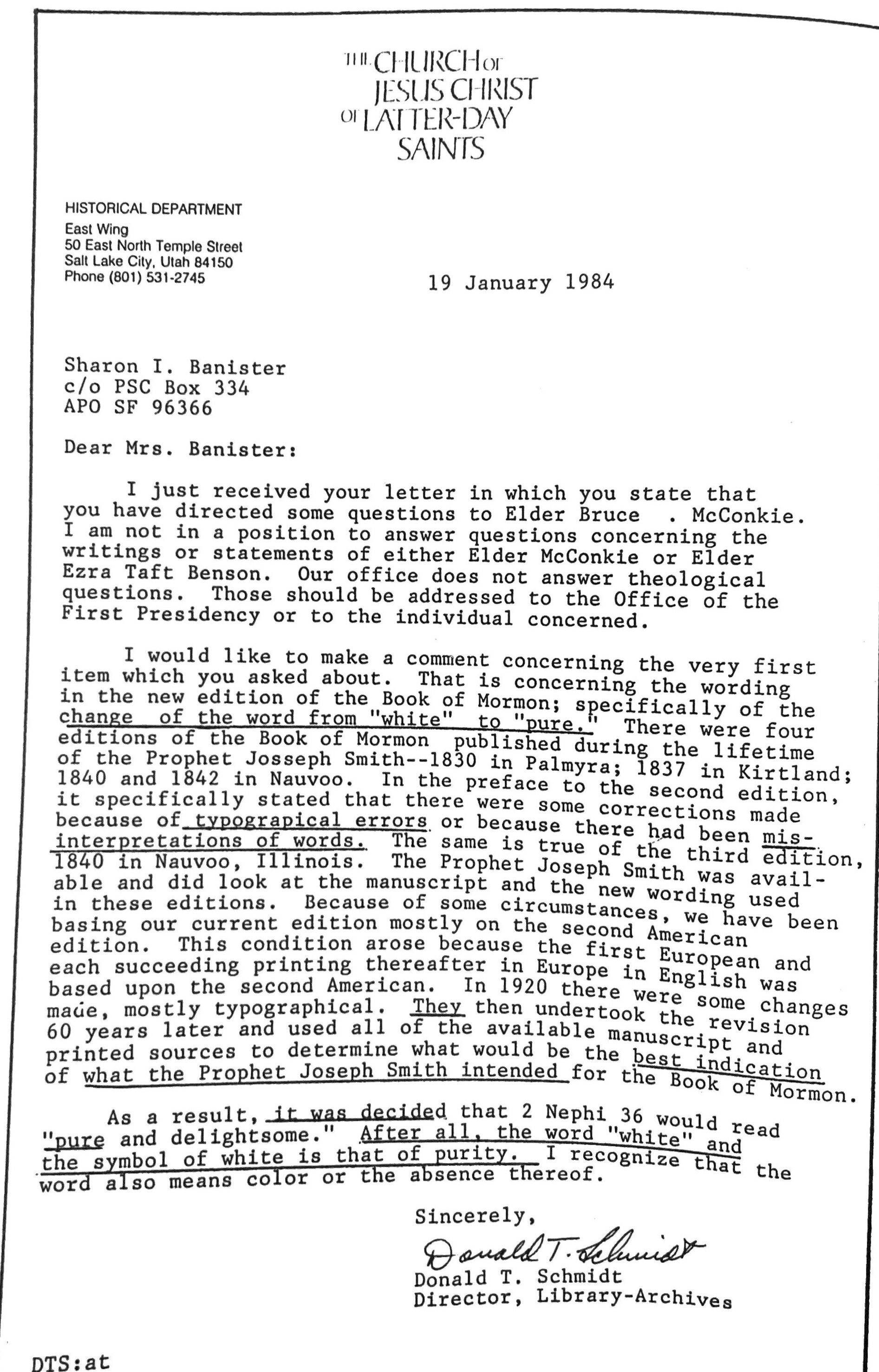Donald T. Schmidt argues "white" in 2 Nephi 30:6; was being used in a symbolic fashion for "pure."
- Type
- Letter
- Source
- Donald T. Schmidt LDS
- Hearsay
- DirectReprint
- Reference
Donald T. Schmidt, letter to Sharon I. Banister, January 19, 1984, in Sharon I. Banister, For Any Latter-day Saint: One Investigator's Unanswered Questions (Forth Worth, Texas: Star Bible Publications, Inc., 1988), 202
- Scribe/Publisher
- Star Bible Publications, Inc., Donald T. Schmidt
- People
- Donald T. Schmidt
- Audience
- Sharon I. Banister
- Transcription
HISTORICAL DEPARTMENT
East Wing
50 East North Temple Street
Salt Lake City, Utah 84150
Phone (801) 531-2745
19 January 1984
Sharon I. Banister
c/o PSC ox 334
APO SF 96366
Dear Mrs. Banister:
I just received your letter in which you state that you have directed some questions to Elder Bruce . McConkie. I am not in a position to answer questions concerning the writings or statements of either Elder McConkie or Elder Ezra Taft Benson. Our office does not answer theological questions. Those would be addressed to the Office of the First Presidency or to the individual concerned.
I would like to make a comment concerning the very first item which you asked about. That Is concerning the wording in the new edition of the Book of Mormon; specifically of the change of the word from “white” to pure.” There were four editions of the Book of Mormon published during the lifetime of the Prophet Joseph Smith—1830 in Palmyra; 1837 in Kirtland; 1840 and 1842 in Nauvoo. In the preface to the second edition, it specifically stated that there were some corrections made because of typographical errors or because there had been misinterpretations of words. The same is true of the third edition, 1840 in Nauvoo, Illinois. The Prophet Joseph Smith was available and did look at the manuscript and the new wording used in these editions. Because of some circumstances, we have been basing our current edition mostly on the second American edition. This condition arose because the first Europeans and each succeeding printing thereafter in Europe in English was based upon the second American. The 1920 there were some changes made, mostly typographical. They then undertook the revision 60 years later and used all of the available manuscript and printed sources to determine what would be the best indication of what the Prophet Joseph Smith intended for the Book of Mormon.
As a result, it was decided that 2 Nephi 36 would read “pure and delightsome.” After all, the word “white” and the symbol of white is that of purity. I recognize that the word also means color or the absence thereof.
Sincerely
[Signed] Donald T. Schmidt
Donald T. Schmidt
Director, Library-Archives
DTS:at
- Citations in Mormonr Qnas
The B. H. Roberts Foundation is not owned by, operated by, or affiliated with the Church of Jesus Christ of Latter-day Saints.

